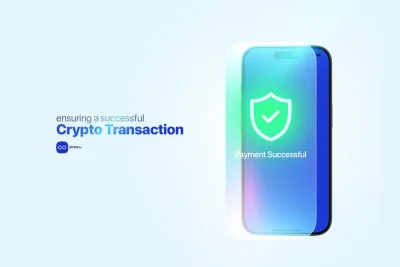Blockchain technology is transforming business transaction processes across industries. It offers a decentralized and secure framework, going beyond technological innovation. It reshapes payment processes, boosts transparency, and enhances security. This article explores blockchain technology’s core features and its role in facilitating payments. It serves as a comprehensive guide for businesses looking to adopt this technology.
Definition of Blockchain Technology
Blockchain technology operates as a distributed ledger system that records transactions with an immutable cryptographic signature known as a hash. This technology supports cryptocurrencies like Bitcoin and Ethereum and has applications well beyond them. Blockchain’s design ensures secure and transparent data recording and sharing across a network. Its decentralized nature eliminates reliance on a central control point, greatly enhancing security and minimizing data tampering risks.
Breaking Down How Blockchain Functions
Blockchain technology comprises a chain of digital “blocks” that each contain transaction records. Each block connects to the preceding and following ones, which greatly complicates any tampering efforts. Participants known as “miners” validate these transactions by solving complex mathematical problems, a process referred to as “hashing.” Successful hashing not only secures the network but also appends a new block to the blockchain. This decentralized, cryptographic method ensures that each transaction is permanently recorded and visible to all network participants, thereby enhancing security and transparency.
Evolution of Blockchain Technology Over Time
Since its inception in 2008, blockchain technology has seen significant evolution. Initially created for digital currencies, its applications now stretch across various sectors including finance, healthcare, supply chain management, and voting systems. Innovations like smart contracts automate agreements without human intervention. Decentralized finance (DeFi) platforms provide financial instruments without traditional intermediaries. These are just a few examples of blockchain’s ongoing evolution.
Key Features of Blockchain
Blockchain technology’s defining characteristics include decentralization, transparency, immutability, and consensus. Decentralization eliminates the need for a central authority, enabling direct recording of transactions and data between parties. Transparency ensures that all participants can see and audit each transaction in real-time. Immutability guarantees that once entered into the ledger, no one can alter a transaction, providing a reliable record. Finally, consensus algorithms play a crucial role in blockchain operations, as they require validation of all transactions by multiple network nodes before adding them to the blockchain.
The Blockchain Trilemma: Security, Scalability, and Decentralization
Exploration of Blockchain Protocols and Algorithms
Blockchain technology relies on various protocols and algorithms, each designed to fulfill specific needs for security and efficiency. The proof-of-work (PoW) algorithm demands that participants execute complex computational tasks. These tasks add new transactions to the blockchain and protect the network from fraud. In contrast, the proof-of-stake (PoS) algorithm allocates validation power based on the amount of tokens a participant holds. This allocation significantly cuts down the required computational energy. Together, these protocols ensure the blockchain remains both secure and functional as it expands to handle more transactions and participants.
How Blockchain Payments Operate
In blockchain payments, each transaction is digitally signed and then sent to the blockchain network. Once broadcast, network participants, often called miners in some blockchain models, verify the transaction using established algorithms. After verification, the transaction merges with others to form a new block of data for the ledger. This new block is then permanently added to the existing blockchain, completing the transaction. This process not only secures the transaction but also eliminates intermediaries. Consequently, it speeds up the entire process and reduces costs.
Benefits of Blockchain Payments for Businesses
Blockchain payments offer several substantial advantages to businesses over traditional methods. First, they significantly reduce transaction fees by eliminating intermediaries. Additionally, the cryptographic foundation of blockchain greatly enhances security, actively safeguarding transaction data. Furthermore, transactions process much faster, as settlements can occur nearly instantaneously worldwide. Moreover, blockchain ensures a high level of transparency and traceability, which can considerably enhance trust between transacting parties. This transparency enables all parties to actively track and verify transactions in real time.
Challenges and Solutions in Blockchain Payments
While blockchain offers enhanced security and efficiency, challenges like scalability issues, high energy consumption, and regulatory uncertainties persist. Solutions include adopting energy-efficient consensus algorithms like Proof of Stake, implementing layer-two scaling solutions, and engaging with regulatory bodies to refine guidelines, ensuring smoother adoption and integration into existing financial systems.
Practical Applications for Different Industries
Blockchain’s versatility allows it to be applied in various industries. In finance, blockchain is used to streamline cross-border payments and reduce fraud. Also In supply chain management, it provides a transparent way to track the provenance of goods, from production to delivery. In the energy sector, blockchain enables more efficient trading and tracking of renewable energy credits. Each application not only demonstrates blockchain’s utility but also its potential to drive efficiency and innovation in traditional business models.
Integrating Blockchain Payments in Existing Financial Systems
Integrating blockchain payments into existing financial systems is essential for businesses seeking to enhance efficiency and security without disrupting established operations. This integration creates a seamless interface between traditional and digital payment methods, allowing them to coexist and support each other. By aligning blockchain’s transaction ledger with conventional financial databases, businesses can manage and record transactions more effectively. Crypto payment gateway play a pivotal role in this process, acting as bridges that convert blockchain’s security and efficiency into formats compatible with traditional finance. The result is streamlined operations, reduced transaction costs, and enhanced transparency, positioning businesses to thrive in a rapidly evolving digital landscape.
Conclusion
Blockchain technology offers a transformative way to conduct and secure digital transactions. With key features like decentralization, transparency, and security, it provides businesses in various industries a robust platform for both making and receiving payments. As the technology evolves, its adoption is set to increase, delivering more streamlined, secure, and cost-effective solutions for global business transactions. Consequently, businesses aiming to stay competitive in the digital age should consider how integrating blockchain could enhance their operational efficiency and security. This integration not only positions them at the forefront of technological advancement but also ensures their processes are more efficient and secure.




